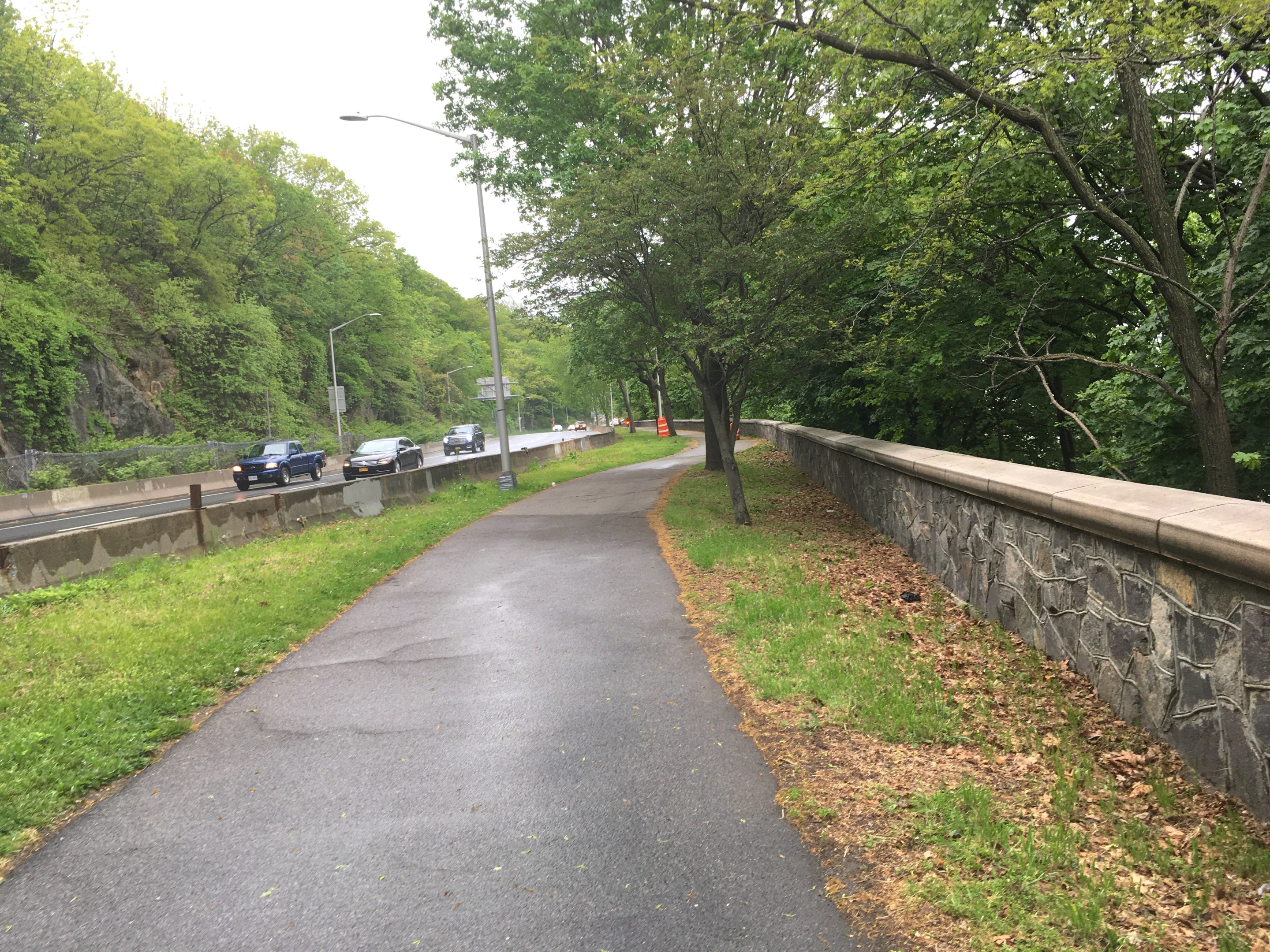Call it a failure of imagination.
State officials are no longer completely ignoring a proposal from upper Manhattan residents to create a detour for cyclists by taking a lane away from car drivers on Henry Hudson Parkway when a stretch of the Hudson River Greenway is closed for repairs for later this year.
The NYS Department of Transportation will "review" any request New York City makes "regarding potential detours of the greenway," spokesman Glenn Blain told Streetsblog. But the city Parks Department isn't offering anything.
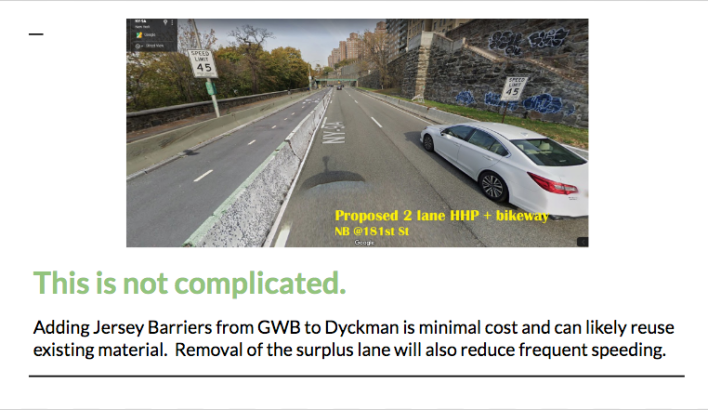
The northernmost part of the nation's busiest bike path skirts the northbound Henry Hudson Parkway for about a mile and a half alongside Fort Washington Park from 182nd to Dyckman streets, the length of the repair zone. In April, Community Board 12, which covers Washington Heights and Inwood, voted to ask the city to study a proposal by local residents that would establish a protected bike lane on the little-used western lane of the northbound side of the parkway as a detour during the construction.
The local residents also had another motive behind their pilot detour, which they said could be created with inexpensive concrete barriers: They hoped to connect the greenway more easily to the Bronx leg of the Empire State Trail, a 750-mile, off-road trail that the state just spent $200 million finishing. Cyclists now must climb the steps of a high footbridge, negotiate steep switchbacks, and squeeze past pedestrians on the Henry Hudson Bridge's three-foot-wide shared path if they want to join the trail.
But the city's Department of Parks and Recreation is declining to broach the proposal with the state, a spokeswoman told Streetsblog — and so cyclists will be shunted onto unprotected, steep, traffic-choked local streets for the duration of the greenway closure. Parks spokeswoman Megan Moriarty said that the department has not requested a detour onto the parkway and instead will work with the city DOT "to ensure the safest cycling path" during the work. She promised that "details will be shared with the community before construction starts."
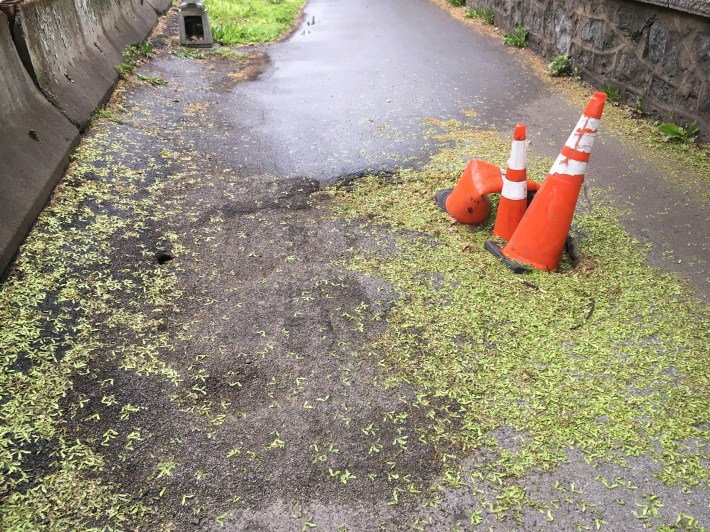
That position is rankling local residents, who say that the city shows little regard for cyclists' safety during greenway closures.
The state DOT's apparent openness to considering a detour on Henry Hudson Parkway is only the latest wrinkle in what is a longtime push by cyclists to gain a protected lane on the city's westernmost road, which is also known as Route 9A. It also represents a slight softening of the state's position. When CB12 adopted its resolution in April, state officials said that there was "not a NYS role" in the city’s reconstruction project, according to one member. That was consistent with earlier state pronouncements.
Last year, cycling activists who were dismayed by crowding on the greenway in southern Manhattan proposed a one-way, protected bike lane for West Street between 57th Street and the Battery. State officials torpedoed the idea, despite the support it had gained from three local community boards and nine elected Manhattan officials.
Activists for some years also have agitated for a protected bike lane in the traffic circle atop the Rotunda at 79th Street, which serves as an exit of the HHP and is undergoing a revamp. The city DOT has agreed only to establish a painted bike lane there, even though the traffic circle functions as a major biking entrance into Riverside Park and motorists and cyclists mix uneasily in it.
And the Parks Department earned city cyclists' wrath for not improving crosstown routes through Central Park, despite years of campaigns, and the death of a beloved doctor in 2019.
Now, however, there is precedent for at least a temporary protected bike detour on 9A. As Streetsblog reported, the state DOT supplied a protected bike-lane detour during work hours for a week last month on West Street between 14th and 16th streets.
Although at first glance the northern Manhattan stretch of Route 9A looks like any other highway, it started its life as a city street — the northern portion of Riverside Drive. A 1925 construction project, the "Riverside Drive Improvement," built majestic features along the scenic road, such as the "Inspiration Point" colonnade opposite Fort Tryon Park.
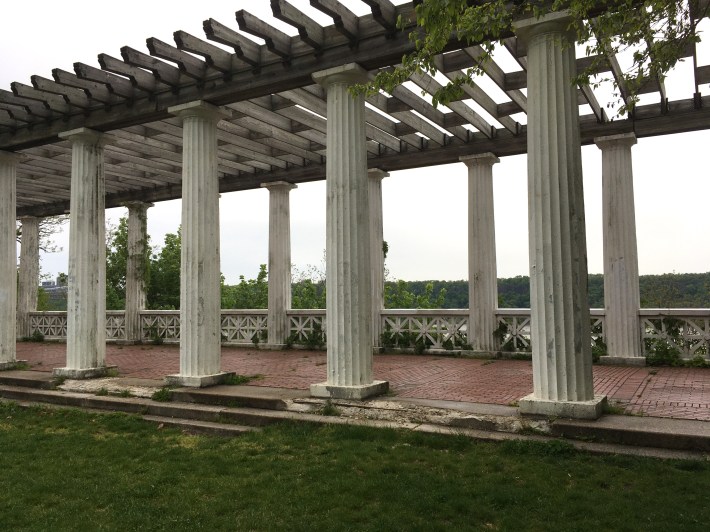
Within a decade, however, "master builder" Robert Moses had usurped the roadway, building the Henry Hudson Parkway there in order to feed the Henry Hudson Bridge and connect Manhattan car traffic to the northwest Bronx and Westchester. The greenway — a mixed bike/pedestrian path alongside the former Riverside Drive — languished until the Bloomberg administration repaired some of it, but didn't fix the infrastructure problems that are leading to its closing. The repair work in question will restore the crumbling retaining wall that originally separated Riverside Drive from the parks and address sinkholes that have formed.
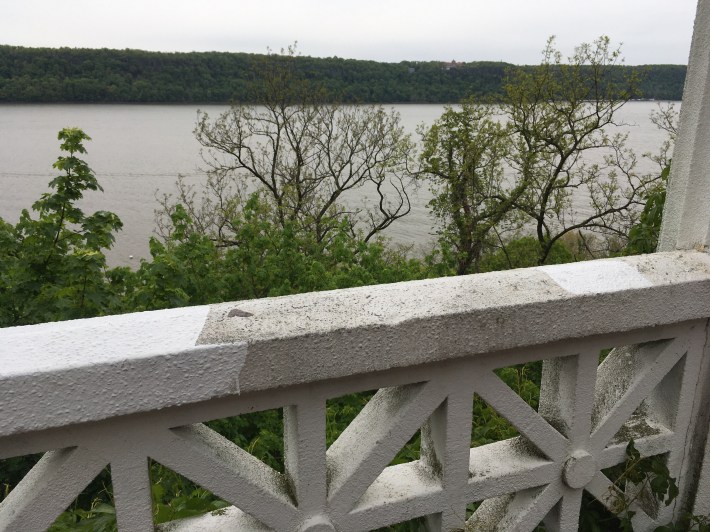
The parkway over the years has encroached on city parks, too. Lane widenings have chipped away Fort Washington Park above the GWB, where the greenway was narrowed to half its former 10-foot width in order to allow drivers to speed more easily around a curve. The parkway also took ground from Inwood Hill Park at the former toll plaza of the Henry Hudson Bridge. (Another casualty of lane widenings was a sidewalk on the east side of the upper span of the bridge.)
The greenway reconstruction project reminded longtime cycling activist and occasional Streetsblog contributor Ed Ravin of other city rehab projects that made few provisions for cyclists, including one that in 2018 closed the wooden-decked bridge on the greenway route over the Amtrak tracks.
"We've heard this song before," Ravin said. "A piece of cycling infrastructure next to a highway is allowed to rot until it is crumbling so much that the highway is threatened, and then it has to be closed for months or years to be repaired or rebuilt, denying critical routes to cyclists and pedestrians while motorists are protected from any negative impacts."
Ravin noted that the same stretch of HHP accommodated a lane closure in 2005 during the repair of the collapsed retaining wall of the Castle Village apartments at 183rd Street. Thus, it should be simple to convert a lane into a level, temporary bike lane for the duration of the greenway rehab.
"Unfortunately, NYC Parks has been spectacularly underwhelming when it comes to arranging detours for the greenway paths it maintains," he said.
